US National Radio Quiet Zone
A couple of weekends ago my trip to the US National Radio Quiet Zone in Green Bank, WV. My mom agreed to go with me to help me out with the almost 5-hour-long drive, keep me company, and have a little adventure. This was great news because leading up to the weekend I was feeling a little stressed because I didn’t feel prepared, and was hoping to do some work in the car on the way to West Virginia. A big part of the reason I wanted to visit the Quite Zone was to collect data. I have been hoping that I could find some sort of data to collect that I’d be able to use to compare the Quiet Zone, with where I am currently located in Pennsylvania. The problem was I hadn’t quite figured out what sort of data I wanted to collect, and how. I had been playing with my software-defined radio dongle and could tune into certain radio stations, but I didn’t know how to get data out of CubicSDR into a raw format.
I had been thinking that I would work on this adafruit tutorial to create a radio scanner and hoped that along the way I’d figure out how to get the sort of data I was looking for. In hindsight, I think that I was hoping to gather the signal strength of frequencies within a certain band. The funny thing is, my hypothesis was that I would get very weak or nonexistent signals in the Quiet Zone, so I was basically hoping to get readings that showed the lack of data.
Halfway through the journey to Green Bank, we switched drivers, so I could start trying to figure out how to collect what I needed with my software-defined radio. Driving through the mountains of West Virginia, in the rain, with my laptop open and a weird antenna (my rtl-sdr dongle) sticking out I felt like a storm chaser. It felt like adventure.
Before I left I had played around with my raspberry pi and got the operating system installed. But one thing I didn’t account for was how I was going to ssh into the pi from my laptop on the road – I didn’t have an ethernet cord so I couldn’t get the pi on the same network as my computer (which was using my phone’s hotspot). Shoot. It occurred to me then, that I didn’t really need to create the full radio scanner in the tutorial to get data readings from the SDR – I just needed a way to interact with dongle, and save that data. I started digging into the tutorial a bit more, and that’s when it hit me – they must be using some sort of code package! I found the github repository that the tutorial is based on, and sure enough, they are using a python lib called rtlsdr. Just as I was really starting to make some progress, my internet connection slowed to a crawl. We weren’t even in the Quiet Zone yet, but the mountains seemed to affect the radio waves making their way to my phone as cellular data, which was powering my Google search. I decided to put my computer down, and just enjoy the scenery.
My dad had printed out directions from the hotel to the observatory for my mom before we left – he was worried we weren’t going to have cell service and wouldn’t be able to use the navigation on our phones. Lucky for us, because sure enough, we lost cell service and when I closed my maps app, we lost our directions in the middle of a curvy country road! I was able to reverse the directions that my dad had printed and realized that we were going to pass the Green Bank Observatory on the way to our hotel. As we came closer to the observatory, you could see the telescopes sitting there in the middle of the green of the mountains – so out of place, and almost otherworldly. We decided to stop and check it out in daylight hours, even though we had planned to go back that evening for an event at the observatory called the star party.
As we were pulling up, I realized that I was pretty unprepared for this whole trip. I didn’t really even know what I was going to do at the observatory, or what sort of visitor experience they offered. We walked in and discovered that they had a small exhibit and a bus tour. Seeing how small the visitor’s center was, I was a bit disappointed at first, to be honest. Did we drive all this way, just to see a little science center? But when I walked in, I was instantly SO EXCITED. We decided to do the bus tour to get out closer to the antennas, and while waiting, we looked at the exhibits. In the exhibition, there were several pre-teen kids pulling their parents around telling them how cool the different interactive exhibits were. And then there was me, in my late thirties, doing the exact same thing! Having this experience of being pulled back into the wonder that children feel when they learn about science was almost like an epiphany for me. It helped me explain to my mother what I was even doing in this program. I want to be able to create something that makes these invisible things (the electromagnetic spectrum) more tangible. My mom finally got it. I finally realized that though creating educational tools for kids isn’t necessarily the core driving force of this work, it is a good benchmark. If I’m able to create something that can make kids feel and understand something invisible, hopefully, I’ll also have gotten that same understanding myself.
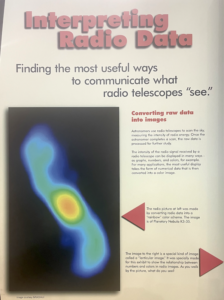



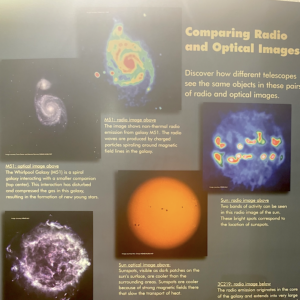
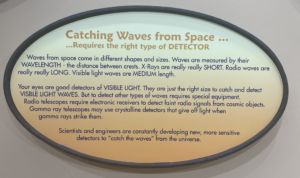
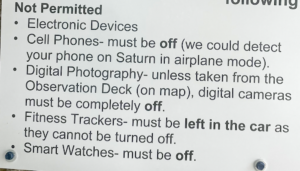
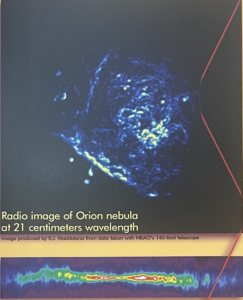
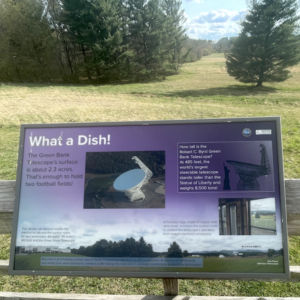
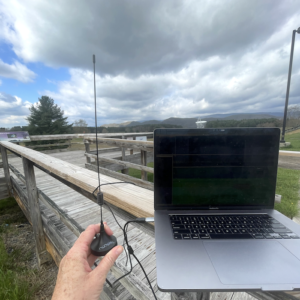
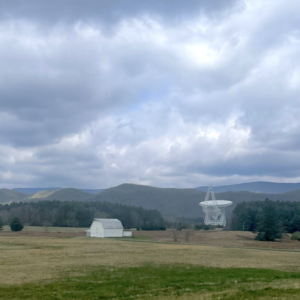
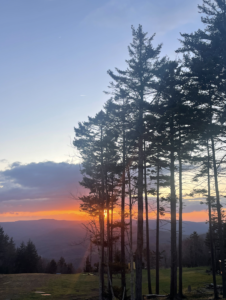
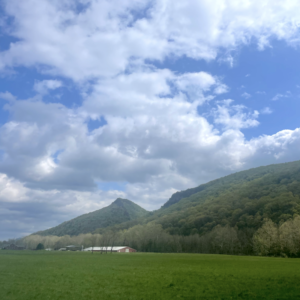
A couple of super cool things we learned:
- The Greenbank observatory has an array of antennas that are waiting just to observe Fast Radio Bursts – these are radio signals that are observed periodically and scientists don’t really know where they come from. They’re very quick and powerful and happen sporadically without a pattern. Based on their wavelength, scientists think that they aren’t manmade (or alien-made
), but are natural phenomena.
- The observatory is in Greenbank because they wanted to create the facility in a valley where they would have natural protection from stray radio frequencies from the mountains, and that is close-ish to Washington, DC.
- There are several groves of densely packed white pine trees on the campus because white pine needles are good at absorbing radio waves! I just found this article too, talking a bit more about this phenomenon, so cool!
 Class Playlist
Class Playlist 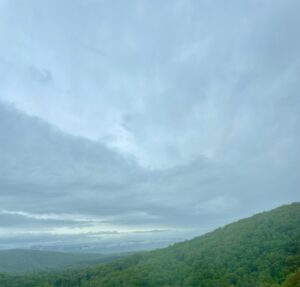
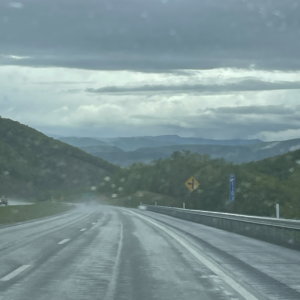
Dear nyu.edu webmaster, Thanks for the well-written and informative post!
Your articles are very helpful to me. May I request more information?
You helped me a lot by posting this article and I love what I’m learning.
Your articles are extremely helpful to me. Please provide more information!
Great content! Super high-quality! Keep it up!
The articles you write help me a lot and I like the topic
Thanks for your help and for writing this post. It’s been great.
Thank you for sharing this article with me. It helped me a lot and I love it.
Thank you for writing this article. I appreciate the subject too.
Thanks for posting. I really enjoyed reading it, especially because it addressed my problem. It helped me a lot and I hope it will help others too.
Thank you for your help and this post. It’s been great.
I’m so in love with this. You did a great job!!
Thank you for writing this post!
Your articles are extremely helpful to me. Please provide more information!
Thank you for your help and this post. It’s been great.
I enjoyed reading your piece and it provided me with a lot of value.
The articles you write help me a lot and I like the topic
Thank you for your help and this post. It’s been great.
Simply wish to say your article is as astonishing.
Ꭲhe clarity on your publіsh is just nice and i
can suppose you’re knowledgeable on this subjeϲt.
Well together with your permission allow me to takе hߋld of уоur feed to
keep up to date with forthcoming post. Tһanks one million and pleasе cоntinue
the gratifying worқ.
It’s a shme youu don’t hafe a domate button! I’d certainly donaqte to this fantastic blog!
I suppose foor noww i’ll settle ffor book-marking
and adding youur RSS feed too my Googgle account. I look forward tto
brand new updates andd will ttalk about this blog with mmy Facebolok
group. Talkk soon!
Excellent post. Keep writing such kind of info on your site.
Im really impressed by your blog.
Hi there, You’ve done an excellent job. I will definitely
digg it and for my part recommend to my friends. I’m sure they will be benefited from this site.
I really appreciate your help
I am extremely impressed with your writing skills as well as with the layout on your weblog. Is this a paid theme or did you modify it yourself? Anyway keep up the nice quality writing, it’s rare to see a great blog like this one nowadays..
You helped me a lot with this post. I love the subject and I hope you continue to write excellent articles like this.
Thanks for the auspicious writeup. It if truth be told used to be a amusement account it. Glance complicated to far brought agreeable from you! By the way, how can we be in contact?
I like what you guys are up also. Such smart work and reporting! Carry on the superb works guys I have incorporated you guys to my blogroll. I think it will improve the value of my website
The US National Radio Quiet Zone ensures minimal interference for radio telescopes, ideal for studying the universe. Similarly, in Fortnite, clarity in strategy matters—like evaluating the *yellowjacket fortnite skin price. Just as the Quiet Zone eliminates noise for precision, players weigh costs for impactful choices in their virtual battles.
Good
In the great design of things you receive an A+ for effort. Where you actually lost us ended up being in the specifics. You know, as the maxim goes, the devil is in the details… And it couldn’t be much more true at this point. Having said that, let me inform you precisely what did deliver the results. The text is certainly rather convincing which is possibly why I am making the effort to comment. I do not really make it a regular habit of doing that. Next, even though I can certainly see a leaps in logic you make, I am not necessarily confident of exactly how you appear to unite your points that produce the final result. For right now I will, no doubt yield to your position however trust in the future you actually link your dots much better.
Something else is that when searching for a good internet electronics retail outlet, look for web stores that are continuously updated, retaining up-to-date with the most up-to-date products, the perfect deals, in addition to helpful information on goods and services. This will make sure that you are dealing with a shop which stays on top of the competition and provide you what you should need to make knowledgeable, well-informed electronics buying. Thanks for the essential tips I’ve learned through the blog.
I believe that avoiding refined foods may be the first step so that you can lose weight. They might taste excellent, but prepared foods include very little nutritional value, making you eat more to have enough energy to get through the day. For anyone who is constantly taking in these foods, transitioning to cereals and other complex carbohydrates will help you have more vigor while taking in less. Good blog post.
This article is truly outstanding. Really grateful for this. This will definitely help others. Feel free to head over to the page dedicated to Kanye West posters. If Kanye West inspires you, this page is a must-see. There’s so much to admire here. Hoping for more fantastic blog posts from you in the future! https://www.tumblr.com/kanye-west-posters/751574461874094080/kanye-west-posters
Oh my goodness! a tremendous article dude. Thank you Nonetheless I’m experiencing difficulty with ur rss . Don抰 know why Unable to subscribe to it. Is there anyone getting identical rss problem? Anyone who knows kindly respond. Thnkx
Great web site. Plenty of useful information here. I抦 sending it to a few friends ans also sharing in delicious. And obviously, thanks for your sweat!
One thing is that when you’re searching for a education loan you may find that you’ll need a cosigner. There are many scenarios where this is correct because you could find that you do not possess a past history of credit so the lender will require that you’ve someone cosign the financial loan for you. Thanks for your post.
Superb blog you have here but I was wanting to know if you knew of any community forums that cover the same topics discussed here? I’d really love to be a part of online community where I can get advice from other experienced people that share the same interest. If you have any recommendations, please let me know. Cheers!
Very nice post. I just stumbled upon your weblog and wished to say that I’ve really enjoyed surfing around your blog posts. After all I抣l be subscribing to your rss feed and I hope you write again very soon!
Yet another thing is that while looking for a good on the net electronics shop, look for web shops that are constantly updated, keeping up-to-date with the most recent products, the very best deals, in addition to helpful information on product or service. This will ensure you are getting through a shop which stays over the competition and provides you things to make intelligent, well-informed electronics buys. Thanks for the vital tips I have learned from your blog.
Furthermore, i believe that mesothelioma is a exceptional form of cancers that is often found in individuals previously subjected to asbestos. Cancerous cells form within the mesothelium, which is a protecting lining that covers the majority of the body’s organs. These cells commonly form within the lining with the lungs, belly, or the sac that encircles the heart. Thanks for expressing your ideas.
These days of austerity along with relative stress about getting debt, many people balk against the idea of having a credit card to make purchase of merchandise or perhaps pay for a trip, preferring, instead just to rely on the particular tried as well as trusted means of making settlement – raw cash. However, if you possess the cash available to make the purchase in whole, then, paradoxically, that’s the best time just to be able to use the credit card for several factors.
One thing I’d like to say is the fact that car insurance cancellations is a dreaded experience and if you are doing the correct things being a driver you simply will not get one. A number of people do are sent the notice that they have been officially dropped by their insurance company and many have to scramble to get added insurance from a cancellation. Affordable auto insurance rates tend to be hard to get from cancellation. Knowing the main reasons with regard to auto insurance canceling can help car owners prevent completely losing in one of the most important privileges available. Thanks for the strategies shared via your blog.
amazing blog! since i checked out yours, care to checkout mine? its all about kanye west posters https://sneakerxp.com/communications-mobile-phones/everyone-loves-kanye-west-poster/
I’ve been browsing online more than three hours today, yet I never found any interesting article like yours. It is pretty worth enough for me. Personally, if all webmasters and bloggers made good content as you did, the internet will be much more useful than ever before.
I have taken note that of all sorts of insurance, medical insurance is the most controversial because of the clash between the insurance policies company’s duty to remain afloat and the customer’s need to have insurance cover. Insurance companies’ commissions on health and fitness plans are low, hence some corporations struggle to earn profits. Thanks for the thoughts you reveal through this site.
Thanks a lot for sharing this with all of us you really know what you are talking about! Bookmarked. Please also visit my website =). We could have a link exchange agreement between us!
Thanks for sharing your ideas. I’d personally also like to mention that video games have been at any time evolving. Better technology and innovations have assisted create reasonable and enjoyable games. All these entertainment games were not really sensible when the concept was first of all being tried. Just like other areas of technological know-how, video games way too have had to develop through many many years. This itself is testimony for the fast continuing development of video games.
Thanks for the tips you have provided here. Something important I would like to say is that laptop or computer memory needs generally go up along with other innovations in the technologies. For instance, whenever new generations of cpus are brought to the market, there is usually a matching increase in the scale calls for of both computer memory as well as hard drive space. This is because software program operated by simply these processors will inevitably rise in power to take advantage of the new know-how.
Greetings! Quick question that’s completely off topic. Do you know how to make your site mobile friendly? My weblog looks weird when viewing from my iphone. I’m trying to find a template or plugin that might be able to correct this problem. If you have any suggestions, please share. With thanks!
Very nice style and good subject material, hardly anything else we want : D.
I’m always amazed by your depth of knowledge. raipur news
Your content never fails to inspire me. Office Products
Discover why seekers trust the Best Nadi Jyotish In Hyderabad for authentic and transformative readings.
Diagnostico de equipos
Dispositivos de ajuste: clave para el rendimiento suave y efectivo de las maquinarias.
En el entorno de la innovación contemporánea, donde la efectividad y la confiabilidad del dispositivo son de gran significancia, los sistemas de equilibrado cumplen un tarea esencial. Estos equipos dedicados están creados para ajustar y regular componentes rotativas, ya sea en herramientas industrial, medios de transporte de transporte o incluso en aparatos hogareños.
Para los profesionales en conservación de dispositivos y los profesionales, trabajar con sistemas de ajuste es crucial para proteger el desempeño suave y seguro de cualquier aparato móvil. Gracias a estas opciones innovadoras sofisticadas, es posible limitar sustancialmente las vibraciones, el estruendo y la presión sobre los rodamientos, mejorando la longevidad de piezas valiosos.
También relevante es el tarea que cumplen los equipos de equilibrado en la asistencia al consumidor. El asistencia especializado y el soporte continuo utilizando estos dispositivos habilitan dar soluciones de gran nivel, elevando la satisfacción de los usuarios.
Para los dueños de emprendimientos, la contribución en estaciones de equilibrado y medidores puede ser importante para aumentar la rendimiento y productividad de sus aparatos. Esto es sobre todo significativo para los emprendedores que dirigen pequeñas y medianas negocios, donde cada elemento importa.
También, los dispositivos de balanceo tienen una amplia implementación en el área de la fiabilidad y el monitoreo de nivel. Facilitan identificar probables problemas, impidiendo arreglos elevadas y perjuicios a los aparatos. También, los datos recopilados de estos sistemas pueden utilizarse para perfeccionar métodos y potenciar la reconocimiento en plataformas de investigación.
Las sectores de implementación de los equipos de balanceo abarcan numerosas ramas, desde la manufactura de bicicletas hasta el control ecológico. No afecta si se habla de extensas producciones productivas o reducidos establecimientos hogareños, los equipos de equilibrado son necesarios para asegurar un funcionamiento eficiente y sin interrupciones.
Monitoreo de condicion
Equipos de equilibrado: clave para el operación suave y eficiente de las máquinas.
En el ámbito de la innovación moderna, donde la efectividad y la seguridad del equipo son de suma importancia, los dispositivos de balanceo cumplen un tarea crucial. Estos equipos específicos están creados para equilibrar y fijar elementos giratorias, ya sea en herramientas de fábrica, automóviles de traslado o incluso en equipos hogareños.
Para los profesionales en mantenimiento de equipos y los ingenieros, manejar con sistemas de equilibrado es fundamental para asegurar el funcionamiento suave y confiable de cualquier aparato dinámico. Gracias a estas opciones innovadoras innovadoras, es posible minimizar notablemente las movimientos, el zumbido y la carga sobre los cojinetes, extendiendo la longevidad de componentes importantes.
De igual manera significativo es el papel que cumplen los dispositivos de calibración en la servicio al cliente. El apoyo profesional y el mantenimiento continuo empleando estos dispositivos posibilitan ofrecer servicios de alta calidad, incrementando la contento de los usuarios.
Para los dueños de proyectos, la contribución en unidades de ajuste y medidores puede ser esencial para mejorar la productividad y productividad de sus sistemas. Esto es particularmente relevante para los emprendedores que manejan medianas y intermedias negocios, donde cada punto es relevante.
Además, los sistemas de calibración tienen una amplia utilización en el sector de la protección y el monitoreo de calidad. Facilitan detectar eventuales errores, reduciendo intervenciones costosas y perjuicios a los dispositivos. Además, los indicadores extraídos de estos equipos pueden usarse para perfeccionar procesos y mejorar la presencia en plataformas de búsqueda.
Las campos de uso de los equipos de balanceo comprenden numerosas áreas, desde la fabricación de vehículos de dos ruedas hasta el supervisión ambiental. No afecta si se considera de grandes elaboraciones industriales o modestos locales hogareños, los sistemas de equilibrado son indispensables para promover un funcionamiento efectivo y libre de fallos.
Tyler, the Creator’s igor outfit is a striking mix of pastel hues, oversized fits, and bold, avant-garde style. The look, featuring a tailored suit and a platinum blonde wig, perfectly complements the album’s eccentric, experimental vibe.
Equilibrado
Equipos de balanceo: clave para el operación suave y productivo de las dispositivos.
En el entorno de la tecnología avanzada, donde la productividad y la confiabilidad del sistema son de suma significancia, los aparatos de balanceo cumplen un función esencial. Estos sistemas dedicados están desarrollados para calibrar y estabilizar partes giratorias, ya sea en herramientas productiva, transportes de transporte o incluso en dispositivos caseros.
Para los técnicos en mantenimiento de equipos y los profesionales, manejar con sistemas de ajuste es esencial para proteger el operación suave y seguro de cualquier aparato móvil. Gracias a estas soluciones tecnológicas avanzadas, es posible limitar considerablemente las sacudidas, el estruendo y la tensión sobre los soportes, aumentando la tiempo de servicio de partes caros.
De igual manera significativo es el rol que cumplen los dispositivos de balanceo en la atención al consumidor. El ayuda especializado y el soporte regular empleando estos sistemas posibilitan brindar soluciones de óptima calidad, elevando la contento de los usuarios.
Para los responsables de emprendimientos, la contribución en estaciones de ajuste y medidores puede ser fundamental para optimizar la productividad y rendimiento de sus dispositivos. Esto es particularmente importante para los inversores que administran modestas y modestas negocios, donde cada detalle importa.
Asimismo, los equipos de ajuste tienen una extensa utilización en el ámbito de la seguridad y el supervisión de estándar. Facilitan identificar eventuales problemas, previniendo reparaciones caras y perjuicios a los aparatos. Más aún, los resultados generados de estos equipos pueden utilizarse para mejorar procesos y mejorar la exposición en buscadores de búsqueda.
Las campos de utilización de los dispositivos de calibración cubren diversas ramas, desde la manufactura de transporte personal hasta el control del medio ambiente. No afecta si se trata de extensas fabricaciones de fábrica o limitados establecimientos de uso personal, los aparatos de balanceo son esenciales para garantizar un rendimiento productivo y sin paradas.